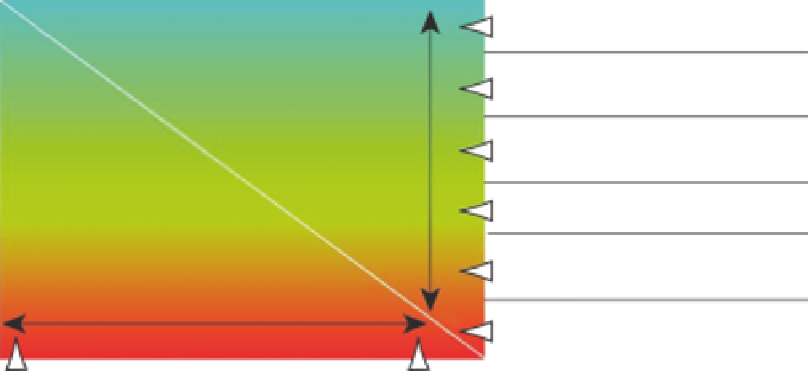Environmental Engineering Reference
In-Depth Information
Natural structural, functional, and taxonomic
integrity is preserved.
1
Structure and function similar to natural community
with some additional taxa and biomass; ecosystem
level functions are fully maintained.
Evident changes in structure due to loss of some
rare native taxa; shifts in relative abundance;
ecosystem level functions fully maintained.
Moderate changes in structure due to replacement
of sensitive ubiquitous taxa by more tolerant taxa;
ecosystem functions largely maintained.
Sensitive taxa markedly diminished; conspicuously
unbalanced distribution of major taxonomic groups;
ecosystem function shows reduced complexity and
redundancy.
Extreme changes in structure and ecosystem
function; wholesale changes in taxonomic composi-
tion; extreme alterations from normal densities.
2
3
4
5
6
Watershed, habitat, flow regime, and
water chemistry as naturally occurs.
Chemistry, habitat, and/or flow regime
severely altered from natural conditions.
FIGURE 7.8
Condition gradients. (From USEPA, Use of biological information to better deine designated
aquatic life uses in state and tribal WQS: Tiered aquatic life uses, U.S. Environmental Protection Agency,
Washington, DC, 2005.)
The model provides a common framework for interpreting biological information regardless
of methodology or geography. The model is typically applied and calibrated to a particular state
or region and is then used to evaluate the current and potential biological condition of its waters
(USEPA 2005). Local taxa are assigned indicative of attributes and are calibrated to assign aquatic
systems to tiers in the BCG. For example, some of the taxa associated with Tier I in Maine include
mollusks such as the brook loater (
Alasmodonta varicosa
), triangle loater (
A. undulata
), yellow
lampmussel (
Lampsilis cariosa
), ishes such as the brook stickleback (
Culaea inconstan
s), and the
swamp darter (
Etheostoma fusiforme
). In Washington, Tier I organisms may include ishes such
as the steelhead (
Oncorhynchus mykiss
) and amphibians such as the spotted frog (
Rana pretiosa
;
Davies and Jackson 2006). See Gerritsen and Leppo (2005) for an example application to streams
in New Jersey.
7.8.2 I
ndex
of
b
IotIc
I
nteGrIty
A second method that evolved based on the deinitions of biological integrity is the widely used
IBI, which is used to assess the degree of human disturbance on streams and rivers. Based on his
original deinition of biological integrity, Karr (1981) developed the original multimetric index IBI
for use in small warmwater streams in central Illinois and Indiana. The original idea was that there
was a gradient between a severe disturbance (such as where everything dies) and a pristine condi-
tion, or a gradient between a very unhealthy and nonsustainable condition and a healthy, sustainable
condition or one with biological integrity (Karr and Chu 2000). The biological condition could be
assessed by evaluating, in the original version (Karr 1981), 12 metrics that relected ish species
richness and composition, the number and abundance of indicator species, the trophic organization
and function, reproductive behavior, ish abundance, and the condition of individual ish:
•
Species richness and composition metrics
•
Total number of ish species (total taxa)
•
Number of Catostomidae species (suckers)
•
Number of darter species
•
Number of sunish species

Search WWH ::

Custom Search